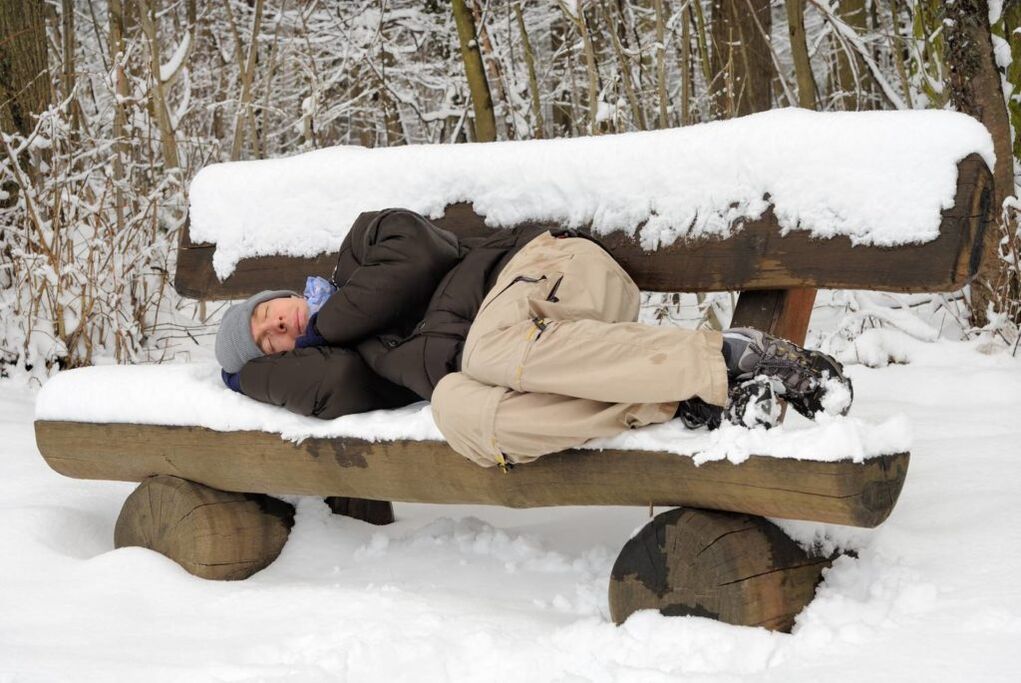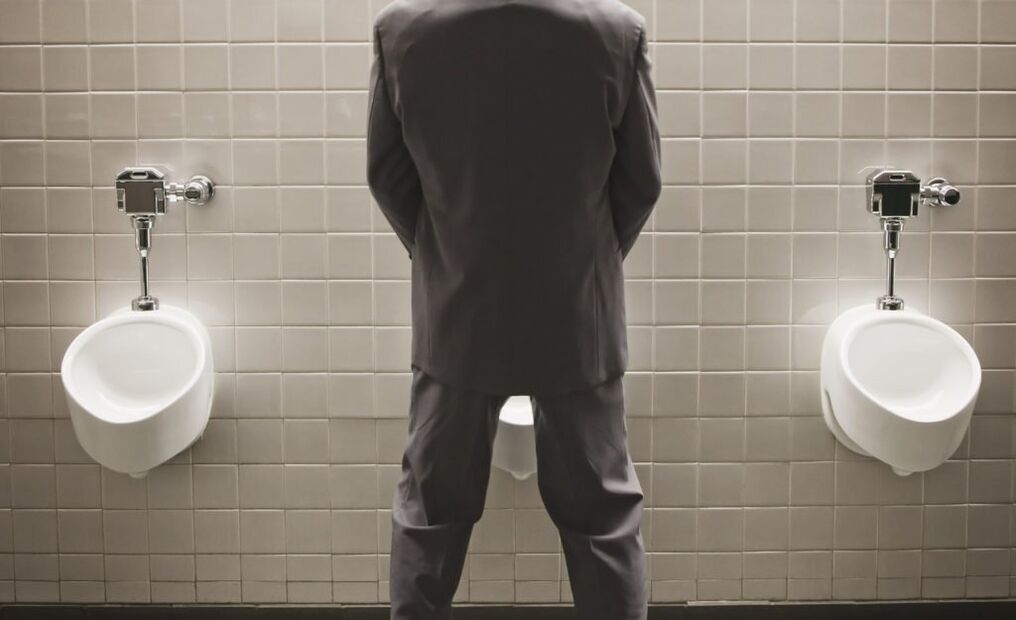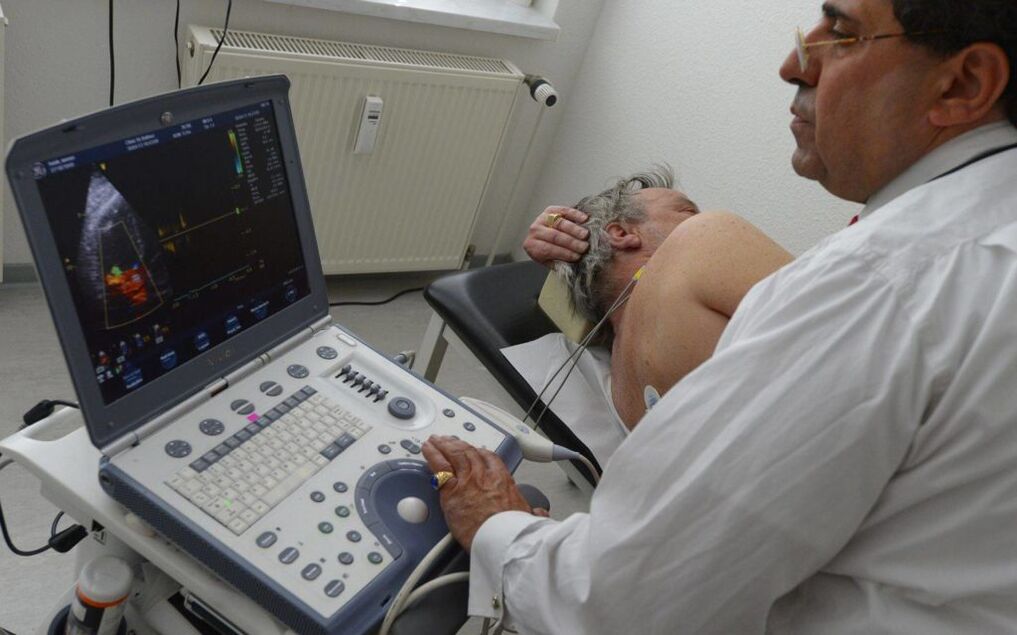Prostatitis is a dangerous disease, but unfortunately it is a very common disease of the male urinary system. Previously, the disease occurred mainly in older men, but today urologists are increasingly diagnosing it in younger patients. Everyone concerned about their health needs to know what types of prostatitis are and how they manifest.
Causes of prostatitis

Sharp hypothermia of the prostate is the most "sure" way to cause prostatitis.
Prostatitis is inflammation of the prostate gland. The disease must be diagnosed and treated promptly, or it can have serious consequences.
The causes of this disease fall into two broad categories - infectious and non-infectious. Contagious causes of the disease include:
- Opportunistic pathogens that are always present in the human body;
- fungus;
- sexually transmitted bacteria;
- Virus;
- Mycobacterium.
The opportunistic pathogens of this disease are Escherichia coli and Pseudomonas aeruginosa, since the most common infectious prostatitis is caused by these pathogens. They travel from the gastrointestinal tract to the prostate with the movement of blood or lymph. In addition, the disease may be caused by the invasion of pyogenic bacteria (pneumococcus, staphylococcus) from the urethra or by the hematogenous route.
The fungus that causes prostatitis is usually a yeast group of the genus Candida. This fungal infection can occur through sex, but Candida is an important part of the body's normal flora, so it can enter the prostate from other organs and systems. In rare cases, fungal prostatitis is caused by mold.
Syphilis, gonorrhea, chlamydia, and other infections spread through unprotected sex can cause inflammation of the prostate.
In rare cases, viruses can be the cause of illness. Therefore, prostatitis can develop in the context of influenza or SARS, where the virus spreads throughout the body through the bloodstream. Prostate tuberculosis was isolated separately. This is a dangerous disease associated with infection of the organs with the bacteria Koch, the causative agent of tuberculosis.
Noninfectious causes of prostatitis:
- stagnation of prostate secretion;
- disruption of blood circulation and lymphatic outflow to the pelvic organs;
- Genital hypothermia;
- Varicose veins.
In general, non-infectious prostatitis is often referred to as "the office worker's disease" because its development is directly related to physical inactivity.
risk factor

If the main risk group for the disease early on was men over the age of 50, today there are more risk factors, so younger men aged 23-25 are increasingly facing prostatitis. There is an increased risk of developing prostate inflammation due to:
- lack of regular sex life;
- Sedentary work and fatigue;
- endocrine disorders;
- hormone imbalance;
- low temperature;
- pressure;
- malnutrition;
- bad habits;
- Unprotected sex.
Lack of sex is the main enemy of the prostate. But at the same time, too intense sex can also cause damage to this organ. If, in the case of prolonged abstinence, the stagnation of prostate secretion during ejaculation can cause inflammation, then a rich sex life can deplete the prostate, which can lead to the development of prostatitis.
A man's body needs regular physical activity. Otherwise, the blood circulation of the pelvic organs deteriorates, leading to the swelling of the prostate gland and the destruction of the nutritional function of the organ tissues, which in turn is the main reason for the development of non-infectious inflammation. prostate.
Among the risk factors are decreased immunity, promiscuity, and various diseases of the genitourinary system, which may be potential sources of infection.
Classification of prostatitis
To understand what prostatitis is, we must first classify the disease. However, diagnosing yourself by describing symptoms is not recommended. At the first sign of discomfort, you should consult a urologist. It should be understood that different types of prostatitis have different manifestations, but if not treated in time, they will pose a threat to men's health.
Regardless of the form of prostatitis, treatment should be started as soon as possible. Early diagnosis and prompt treatment is an opportunity to get rid of the disease within a few weeks without the risk of complications.
Prostatitis is classified according to the nature of the inflammation and the degree of involvement of the prostate tissue in the pathological process. Each form of the disease has specific signs that are found during the examination. Therefore, the results of prostate secretion analysis, which all men with suspected prostatic inflammation should undergo, will best describe the type of disease.
What is acute prostatitis?

Before considering the specific forms of the prostatitis process, it is necessary to understand what prostatitis is according to the nature of the course. There are two main forms - acute and chronic inflammation.
Acute prostatitis is a rapidly spreading inflammation of the prostate. Mostly, it is a disease caused by any pathogen. However, non-infectious forms of the disease can also occur in acute forms, eg, during initial manifestations.
Acute prostatitis is characterized by distinct symptoms. Men complain of severe urination disturbance, severe pain in the perineum, waist, and anus. Discomfort increases when trying to urinate and ejaculate.
Features of chronic prostatitis
The chronic form of the disease is caused by acute prostatitis. This type of male prostatitis has less obvious symptoms and is mainly related to the lack of or insufficient treatment of acute prostatitis. The pathology is characterized by slow, sometimes worsening inflammation.
Symptoms of the disease: Weak urine flow, slow erection, weak arousal. In chronic prostatitis, the urge to go to the toilet increases at night, and during defecation, he experiences prostate discomfort, manifested as a feeling of organ squeezing or bursting.
With hypothermia or weakened immunity, symptoms worsen, bladder pain and cramping, and urges to go to the toilet become more frequent.
Bacterial Prostatitis: Features and Symptoms
One of the most common types of disease is bacterial prostatitis. It is caused by the infiltration of various bacteria into the prostate. In most cases, the pathogen is Escherichia coli or Pseudomonas aeruginosa, or other opportunistic bacteria that inhabit the human body.
The main reasons for its development are decreased immunity, severe stress, smoking and other conditions that weaken the body.
Bacterial prostatitis presents with the following symptoms:
- Pain and pain during urination, related to irritation of the urethra by bacteria penetrating from the prostate;
- high body temperature;
- General poisoning symptoms: nausea, dizziness, weakness;
- perineal pain;
- Blood excretion in urine.
This form of the disease progresses rapidly and can lead to a prostate abscess. When the first symptoms appear, you should make an appointment with a specialist immediately.
infectious prostatitis
Contagious, called prostatitis, is caused by bacteria, fungi, or viruses. In fact, bacterial prostatitis is an infectious inflammation. This type of pathology has the same symptoms as bacterial inflammation.
Infectious forms of the disease can occur in acute and chronic forms. Often, the chronic form of the disease develops as a result of complications or improper treatment of acute inflammatory processes.
viral prostatitis

Acute respiratory viral infection may act as a catalyst for the development of viral prostatitis
The most dangerous and poorly studied form of infectious prostatitis is viral inflammation. It can be caused by pathogens such as herpes, human papillomavirus, measles, rubella, and influenza. Typically, prostate inflammation occurs in the context of the usual SARS pathogen transmission.
The problem with viral prostatitis is that antibiotic treatment is ineffective and antiviral agents do not penetrate the prostate tissue well.
Therefore, long-term treatment with antiviral drugs and immunomodulators is required, after which the disease is likely to become chronic and continue treatment with other drugs. This form of prostatitis often leads to infertility at a young age.
fungal prostatitis
This is a rare disease caused by a fungus of the genus Candida. The main feature of this inflammation is the almost complete absence of symptoms in the initial stage. Therefore, fungal prostatitis itself does not appear in an acute form, but immediately becomes a chronic disease.
suppurative prostatitis
This is the most serious and dangerous infectious inflammation caused by purulent bacteria. The pathology proceeds in an acute form, manifested by hyperthermia and the release of a purulent mass from the urethra. The disease can lead to a prostate abscess that requires urgent hospitalization and surgical intervention, or the abscess can rupture and become infected with a purulent blood clot.
Inflammatory stone form
Stones or stones may form in the prostate. They are phosphate and calcified deposits on the walls of organs. Stones can irritate prostate tissue, causing an inflammatory response. The disease is characterized by the excretion of blood in the urine and severe pain during bowel movements due to the movement of salt deposits caused by muscle tension and tissue damage to the prostate. Older men experience this form of the disease. In addition, calculous prostatitis is considered a complication of untreated congestive prostatitis in men.
diagnosis

Having learned about the types of prostatitis in men and the symptoms of different types of inflammation, it is clear that the diagnosis should be made solely by a specialist. It is necessary to contact a urologist and get checked at the first signs of discomfort. To make a diagnosis, prostate palpation, prostate secretion analysis, and organ ultrasound are performed.
The cause of inflammation depends on the composition, consistency, and amount of prostatic fluid. Ultrasonography was performed to rule out calculous prostatitis. Based on the results of these tests, a diagnosis is made and the best treatment plan is developed.
treatment of inflammation
The signs and symptoms of prostatitis depend on the type of disease. Treatment is selected individually for each patient according to the nature of the inflammatory process. In general, all bacterial inflammatory processes are treated with broad-spectrum antibiotics with antimicrobial activity. To treat viral diseases, antiviral drugs and drugs that boost immune defenses are used. The fungal form of the disease requires the use of special drugs - antifungals.
To eliminate non-infectious inflammation, so-called prostate biostimulants are used. These drugs improve the nutrition of inflamed organ tissues, dilute prostate secretions and stimulate their outflow. These drugs can improve the function of the body.
In addition, symptomatic treatment is prescribed. In the acute form of the disease, NSAIDs are used to relieve pain and fever. If a man has severe urination problems, medications that relax the muscles of the bladder and urethra -- alpha-blockers -- can be used.
In addition, herbal diuretics, suppositories to improve blood circulation in the glands, anti-inflammatory drugs with natural ingredients and other groups of drugs are used.
It is important to remember that self-medication can greatly damage your health. Medication can only be prescribed by the attending physician.
How can the development of the disease be prevented?

To prevent this disease, you should have regular checkups.
Prevention of prostatitis is a hot topic for all men. For a healthy prostate, you must:
- Prompt treatment of all diseases;
- Always dress according to the weather and avoid genital hypothermia;
- take care of your health and use birth control;
- lead an active lifestyle;
- do excercise;
- reject bad habits;
- eat well.
As a precaution, all men are advised to consume small amounts of pumpkin seeds, as this product is a natural prostate protectant.
Also, all men over the age of 40 should see a urologist annually, even if there are no complaints.






























